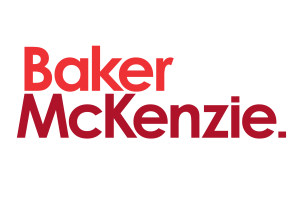The economic devastation wrought upon the US economy by the COVID-19 pandemic and the resulting stay at home orders has severely impacted businesses of all sizes – from the “mom and pop” business to corporate behemoths in almost every sector. Even as stay-at-home orders are relaxed and businesses are allowed to reopen, it is apparent that not all businesses will be able to recover from the sometimes complete loss of income for more than two months, let alone deal with the uncertainty of the ongoing viability of certain businesses. As business owners struggle to address the fallout that will likely linger for years, many predict a wave of bankruptcy filings throughout the country.
Many companies have accepted funds from the Payroll Protection Plan (“PPP”) and are living off those funds for the time being.
Within the first three months after the shelter in place orders were enacted, that wave started to materialise, but it has been mainly the corporate giants that are seeking refuge of Chapter 11—not the small or middle market enterprises. Household names like JCPenney, Neiman Marcus, Hertz, Rent-a-Car, J. Crew, Gold’s Gym, and Frontier Communications have all filed under Chapter 11 during the pandemic. While these companies were likely all facing economic problems prior to the pandemic, they have universally cited COVID-19 as the factor that finally pushed them into bankruptcy. Although, it is unquestionable that small businesses have been hit harder, with some sources predicting that as many as 7.5 million small businesses could be permanently shuttered, there has not yet been a noticeable increase in bankruptcy filings among these small businesses.
The reluctance to file bankruptcy almost certainly involves a justifiable concern over the cost.
Bankruptcy professionals speculate that this has not happened for a number of reasons. Many companies have accepted funds from the Payroll Protection Plan (“PPP”) and are living off those funds for the time being. In addition, with many jurisdictions having moratoriums on evictions and foreclosures in place during the pandemic and access to state courts remaining limited, many businesses have no urgent reason to seek the refuge of the automatic stay. With bankruptcy usually regarded as a stop of last resort, it is not surprising that smaller businesses have held off from filing bankruptcy.
The reluctance to file bankruptcy almost certainly involves a justifiable concern over the cost. The corporate giants have access to enormous budgets (typically funded by their lenders and/or private equity backers) and with that budget can utilise an army of professionals, including lawyers, financial advisers, chief restructuring officers, liquidating agents, among others, to help clean up their balance sheets, “right size” their operations, and emerge as a viable enterprise. Chapter 11 reorganisations are notoriously expensive, and without access to a capital source, many smaller companies believe they simply cannot afford the cost of restructuring, and ultimately elect to liquidate in some form or fashion.
Specifically, the CARES Act opens the door to many thousands of businesses and individuals to allow them to take advantage of the Small Business Reorganization Act of 2019 (SBRA), which created the “Subchapter V” bankruptcy case.
While the cost concern is certainly justifiable, small business owners should not overlook a short-term opportunity to use the bankruptcy court to restructure their balance sheets, an option that has been available to them by the enactment of the Coronavirus Aid, Relief, and Economic Security (CARES) Act. Most are familiar with the emergency - and in some cases forgivable -SBA loans to individuals and small businesses, payroll tax other related relief under the CARES Act. However, one provision which provides a potentially powerful tool to small businesses and individuals engaged in business has not gained as much attention.
Specifically, the CARES Act opens the door to many thousands of businesses and individuals to allow them to take advantage of the Small Business Reorganization Act of 2019 (SBRA), which created the “Subchapter V” bankruptcy case. The SBRA passed in late 2019 and which took effect on 19 February 2020, is an attempt to make Chapter 11 reorganisations more efficient, streamlined, and less expensive than traditional Chapter 11 reorganisations. The concept behind the SBRA was to make Chapter 11 accessible to those companies and individuals who could restructure a salvageable enterprise were it not for the heavy administrative burden of Chapter 11. A high-level discussion of the provisions of the SBRA is discussed below.
This significant rise in the debt limit gives distressed companies an opportunity to help address the damage caused or exacerbated by the pandemic, and it should not be overlooked by professionals advising these companies.
Prior to the enactment of the CARES Act, a company or an individual engaged in commercial or business activities and had less than $2,725,625 in total non-contingent liquidated debt, including secured and unsecured claims, could elect to file under Subchapter V of Chapter 11. Under CARES, that debt limit has been raised to $7,500,000 for the next year. Cases filed after 27 March 2021 will be subject to the $2,725,625 debt limit. This significant rise in the debt limit gives distressed companies an opportunity to help address the damage caused or exacerbated by the pandemic, and it should not be overlooked by professionals advising these companies.
Some of the significant benefits of Subchapter V are:
- No Absolute Priority Rule: In a traditional Chapter 11, if all classes of creditors do not vote in favour of the plan, and if the plan does not provide for payment in full to creditors, the owners of the company cannot retain their interest unless they put in “new value” equal to the equity interest they propose to retain. This is commonly referred to as the “Absolute Priority Rule”. Under the SBRA, there is no Absolute Priority Rule and equity owners can retain their interest in the company even if debts are not fully repaid, so long as the plan devotes three years (or up to five years if the Court so orders) of the debtor’s “projected disposable income” to payment of creditor claims.
- No Disclosure Statement: In a traditional Chapter 11, before a Debtor may solicit votes on its plan, the Court must approve a disclosure statement describing the Plan. To expedite the process and eliminate the cost and litigation over the disclosure statement approval, the SBRA eliminates the need for a disclosure statement altogether, unless the court rules that one is necessary.
- No Competing Plans: In a traditional Chapter 11, after the expiration of the Debtor’s exclusive periods to file a plan, any party in interest can file a competing plan. Under the SBRA, only the Debtor can file a plan. This provision eliminates the concern that a creditor or competitor could undertake a hostile takeover of the company or its assets through a plan.
Companies and individuals that have been hard hit by the pandemic and/or were in distress independently of the virus, should give serious consideration to taking advantage of the significant benefits of the SBRA while they still can.
- No Creditors Committee (Unless Required by the Court): In a traditional Chapter 11, would-be debtors need to account for the administrative costs associated with a creditors committee, which must be appointed in all cases where there is sufficient interest from unsecured creditors. Committees retain professionals, including lawyers and financial advisers, all of which must be paid as a condition of plan confirmation. Under the SBRA, committees are only appointed in cases where the Court finds cause for such appointment. It is anticipated that this will only occur in rare cases, as there is a standing Subchapter V trustee appointed in the case to provide the oversight traditionally undertaken by a committee. The cost of the trustee should not approach those of a traditional creditors’ committee.
- No Impaired Consenting Class Required: To confirm a plan in a traditional Chapter 11, the Debtor needs to secure the affirmative vote of at least one impaired class of creditors. That requirement is eliminated in a Subchapter V case.
- No United States Trustee Fees: Another cost that would-be debtors must account for before filing a traditional Chapter 11 are the quarterly fees to the Office of the United States Trustee. The fees are measured by the disbursements made by the debtor, including all operating costs and payments to creditors. The minimum quarterly fee is $325 but can be as much as $250,000 per quarter. In a Subchapter V case, these fees are eliminated altogether.
- Administrative Claims Can Be Paid Overtime: Under a traditional Chapter 11, administrative claims, i.e. those claims including professional fees that are incurred post-petition, had to be paid on the effective date of the plan, unless the holders of those claims agreed to be treated otherwise. Under Subchapter V, those claims can be stretched out over time, without the consent of the holders of those claims.
Companies and individuals that have been hard hit by the pandemic and/or were in distress independently of the virus, should give serious consideration to taking advantage of the significant benefits of the SBRA while they still can.
Mark Horoupian represents a wide spectrum of participants in the insolvency process, including creditors, creditors’ committees, debtors in possession, Chapter 11 and Chapter 7 trustees, and acquirers of assets from bankruptcy estates. He can be reached at mhoroupian@sulmeyerlaw.com or (213) 617-5240.






















